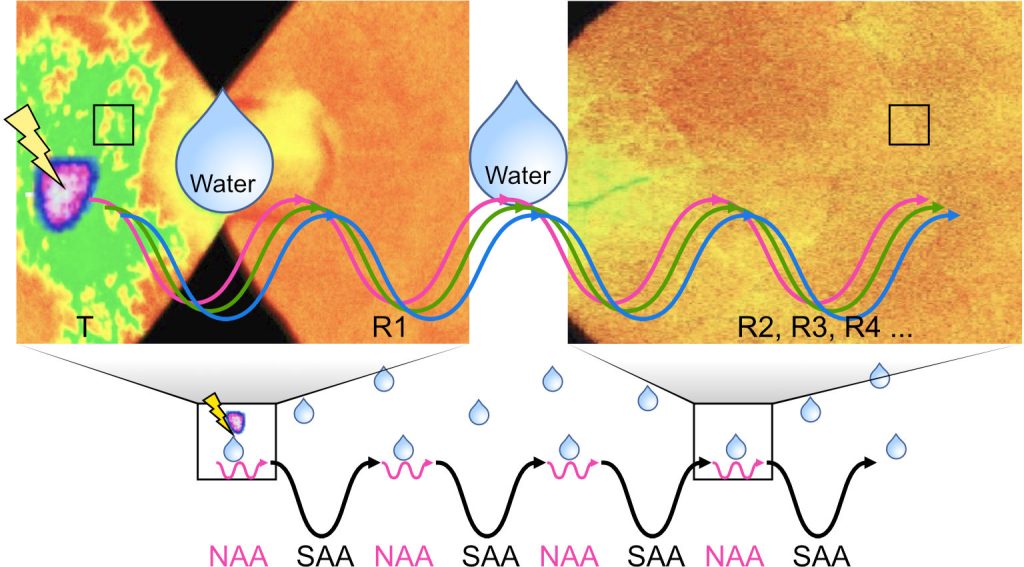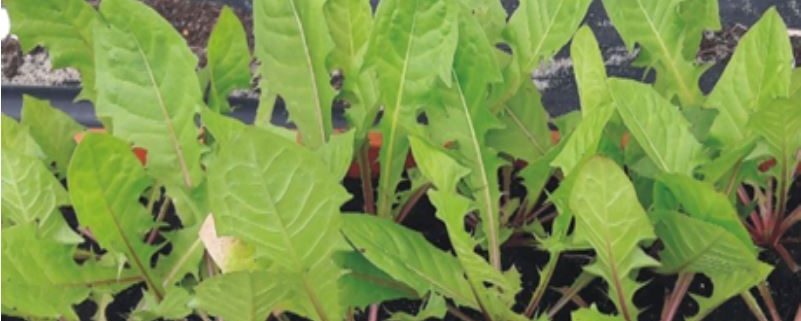Let’s alert neighbors about the danger
Profs. Stanislaw Karpinski and Ron Mittler teams discovered Network Acquired Acclimation.
By Magdalena Szechyńska-Hebda, Ron Mittler, and Stanisław Karpiński
Background: An injured leaf (e.g., by insect herbivory or excess light) generates electric signals (ES) that spread to tissues, leaves, and organs of the entire plant. ES are mediated by changes in the activity of ion channels and are accompanied by waves of reactive oxygen species (ROS) and nonphotochemical quenching (NPQ). These waves are interdependent and propagate systemically throughout the plant. This process is essential for priming specific changes in gene expression and plant acclimation (e.g., cellular light memory). As a result, the entire plant enters a state of Systemic Acquired Acclimation (SAA).
Question: Could ES, ROS and NPQ waves spread from an injured plant to neighboring plants, if their leaves touch? Until now, only indirect signaling routes like underground ES mediated by mycorrhizal networks between roots of different plants, or aboveground plant volatiles, were found to connect different plants.

Illustration of signal propagation from the transmitter to receiver plants.
Findings: Under humid conditions, an injured plant can directly communicate a danger signal to other plants that touch it within a community of plants, like a meadow of dandelions. ES and ROS waves serve as plant-to-plant signals propagating on and in the leaf with a velocity of several mm per s or cm per min, respectively. These signals can induce changes in NPQ, chloroplast retrograde signaling, gene expression, phytohormones, ROS signaling, and acclimation responses, in neighboring plants. Most of these complex communication responses can also be induced between two plants connected by a copper wire circuit, indicating that ES is the main player of plant-to-plant communication. We show that ES and ROS induce a new acclimation phenomenon termed “Network Acquired Acclimation (NAA)”, necessary for SAA induction within a plant community.
Next steps: NAA may be considered as a new communication mechanism within plant ecosystems. However, whether NAA is a “side effect” of SAA, or confers an evolutionary advantage to plants living within the community, and to what extent can ES carry specific information and determine specific responses, are open questions.
Magdalena Szechyńska-Hebda, Maria Lewandowska, Damian Witoń, Yosef Fichman, Ron Mittler, Stanisław M. Karpiński. (2022). Aboveground Plant-to-Plant Electrical Signaling Mediates Network Acquired Acclimation. The Plant Cell. https://doi.org/10.1093/plcell/koac150




